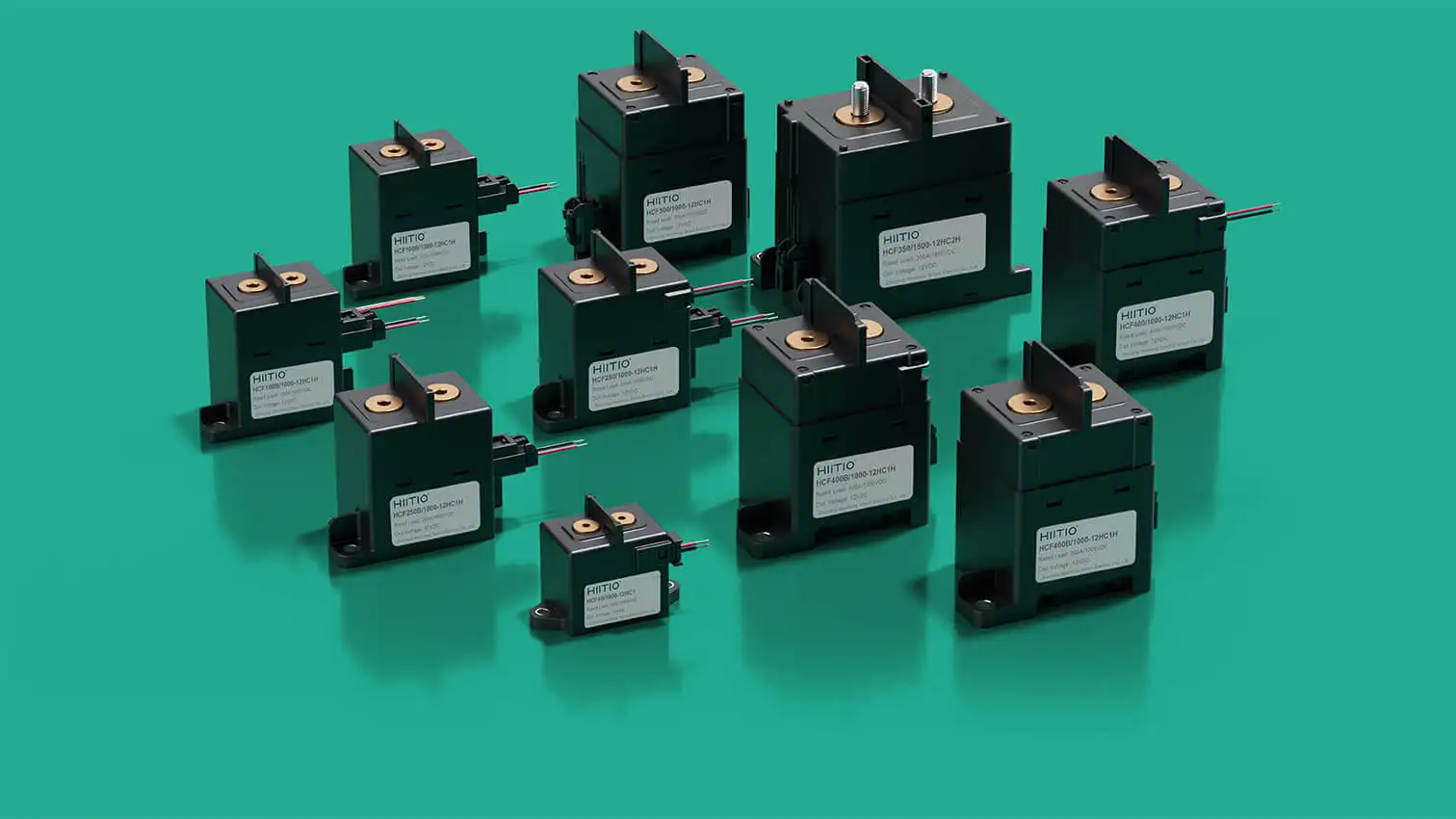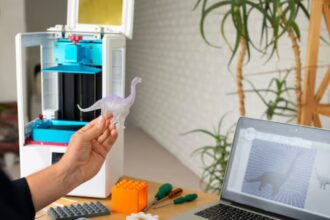High-voltage DC contactors represent critical components in modern electrical systems, from electric vehicle powertrains to renewable energy installations and industrial power distribution networks. While these robust devices are engineered for reliability and longevity, their performance and lifespan depend significantly on proper maintenance practices. A systematic maintenance program not only extends contactor operational life but also prevents unexpected failures that could lead to costly downtime, equipment damage, or safety hazards.
The foundation of effective contactor maintenance lies in understanding the fundamental performance characteristics that determine operational health. Engineers and maintenance personnel must monitor core parameters of high-voltage DC contactors including contact resistance, insulation integrity, mechanical operation timing, and coil characteristics. These parameters provide quantifiable indicators of contactor condition, enabling early detection of degradation before it progresses to failure. Modern maintenance approaches emphasize condition-based monitoring rather than purely time-based schedules, leveraging actual performance data to optimize maintenance intervals and reduce unnecessary interventions.
Implementing a comprehensive maintenance strategy requires careful consideration of the specific application environment and operational duty cycle. High-voltage DC contactors and relays deployed in harsh industrial environments face different challenges than those in controlled climate settings, while devices subjected to frequent switching cycles require more intensive monitoring than those operating primarily for isolation purposes. Environmental factors including temperature extremes, humidity, vibration, dust, and chemical exposure all influence maintenance requirements and inspection frequencies.
Visual Inspection Procedures
Regular visual inspection forms the cornerstone of preventive maintenance, revealing many potential issues before they cause operational problems. Trained personnel should conduct visual examinations at intervals determined by operational duty cycle and environmental conditions, typically ranging from monthly for severe-duty applications to annually for light-duty installations.
Key visual inspection points include:
- External housing condition checking for cracks, deformation, discoloration, or evidence of overheating that might indicate internal problems or inadequate ventilation
- Terminal connections examining mounting bolts, wire terminations, and bus bar connections for looseness, corrosion, or signs of overheating such as discolored insulation or oxidized conductors
- Contact erosion indicators where visible through inspection windows or after opening the device, assessing contact surface condition for excessive wear, pitting, or material transfer
- Arc chute integrity verifying that arc splitter plates remain properly positioned and show no excessive erosion or damage that could compromise interruption capability
- Coil and magnet assembly checking for signs of overheating, insulation damage, or mechanical displacement that might affect actuation performance
- Mounting security ensuring that contactors remain securely fastened to mounting rails or panels with no looseness that could allow vibration-induced damage
Documentation of visual inspection findings creates a historical record that reveals degradation trends over time. Photographic documentation proves particularly valuable for tracking gradual changes in contact condition or identifying patterns that might indicate systematic issues affecting multiple contactors in similar applications.
Electrical Testing and Measurement
Quantitative electrical measurements provide objective data about contactor performance and reveal degradation that may not be apparent through visual inspection alone. These tests should be performed with appropriate safety precautions, ensuring that circuits are properly isolated and de-energized unless specifically testing under live conditions.
Contact resistance measurement represents one of the most critical diagnostic tests for contactor condition. Using a precision micro-ohmmeter or four-wire Kelvin measurement technique, technicians should measure resistance across each pole of closed contacts. Baseline measurements established during commissioning or after contact replacement provide reference values for comparison. Significant increases in contact resistance—typically defined as exceeding 150% of baseline values—indicate contact degradation requiring investigation and potential corrective action. Contact resistance increases result from several mechanisms including contact surface oxidation, erosion reducing contact area, contamination from environmental factors, or loss of contact pressure due to spring degradation.
Insulation resistance testing verifies the integrity of insulating materials between current-carrying parts and ground, as well as between poles of multi-pole contactors. Using an insulation tester (megohmmeter) at appropriate test voltages—typically 500V DC for systems operating below 600V, or 1000V DC for higher voltage applications—technicians measure resistance between contacts and ground, between open contacts, and between different poles. Minimum acceptable values typically range from 1-10 megohms depending on voltage class and manufacturer specifications, though higher values in the hundreds of megohms indicate better insulation condition. Declining insulation resistance trends suggest moisture ingress, contamination, tracking damage, or material degradation requiring investigation.
Coil resistance and current testing ensures proper electromagnetic operation. Measuring coil DC resistance and comparing to nameplate values verifies coil integrity, with significant deviations indicating turn-to-turn shorts, open circuits, or temperature-related changes. For AC-operated coils, measuring both resistance and impedance provides additional diagnostic information. Coil current measurement during operation verifies that draw-in and holding currents fall within specified ranges, with excessive current potentially indicating mechanical binding or inadequate air gap closure.
Timing measurements quantify mechanical response characteristics. Using oscilloscopes or specialized timing test equipment, technicians measure closing time (from coil energization to contact closure), opening time (from coil de-energization to contact separation), and bounce time (duration of contact oscillation after initial closure). Comparison with baseline or specification values reveals mechanical degradation, lubrication issues, or spring problems affecting switching performance.
Mechanical Operation Assessment
Mechanical condition strongly influences electrical performance and overall reliability. Regular assessment of mechanical characteristics identifies issues requiring adjustment or component replacement.
Operating force measurement using calibrated spring scales or force gauges during manual operation (where applicable) verifies that contact springs maintain adequate pressure. Insufficient contact force increases contact resistance and promotes arcing damage, while excessive force can cause mechanical wear or binding.
Stroke measurement confirms that moving contacts travel through their full designed range of motion. Reduced stroke may indicate mechanical obstructions, wear, or adjustment problems that prevent proper contact engagement or adequate separation distance when open.
Auxiliary contact verification ensures that signaling and interlock contacts operate correctly and at appropriate timing relative to main contacts. Auxiliary contacts provide critical feedback for control systems and safety interlocks, making their proper operation essential for system functionality.
Lubrication assessment and renewal where applicable, involves checking lubrication condition at bearing points, pivots, and sliding surfaces. Many modern contactors use self-lubricating materials requiring no maintenance, but older designs or severe-duty applications may specify periodic re-lubrication with appropriate materials. Over-lubrication should be avoided as excess lubricant can migrate to contact surfaces, causing resistance increase and interruption problems.
Record Keeping and Trending Analysis
Comprehensive documentation transforms individual maintenance activities into a powerful predictive tool. Maintenance records should capture:
- Complete identification information including contactor location, manufacturer, model, serial number, and installation date
- Operational data including approximate switching cycle counts, typical load currents, and any unusual events such as fault interruptions
- Inspection findings with measurements, observations, and photographic documentation
- Corrective actions taken including adjustments, cleaning, part replacements, or repairs
- Trending charts showing key parameters over time including contact resistance, insulation resistance, and timing measurements
Analysis of trending data enables predictive maintenance strategies that intervene before failures occur. Statistical process control techniques can identify parameters trending toward limit values, triggering proactive replacement or refurbishment before reliability is compromised.

















